
Conodonts are an extinct group of jawless vertebrates, classified in the class Conodonta. They are primarily known from their hard, mineralised tooth-like structures called "conodont elements" that in life were present in the oral cavity and used to process food. Rare soft tissue remains suggest that they had elongate eel-like bodies with large eyes. Conodonts were a long-lasting group with over 300 million years of existence from the Cambrian to the beginning of the Jurassic. Conodont elements are highly distinctive to particular species and are widely used in biostratigraphy.

The great snipe is a small stocky wader in the genus Gallinago. This bird's breeding habitat is marshes and wet meadows with short vegetation in north-eastern Europe, including north-western Russia. Great snipes are migratory, wintering in Africa. The European breeding population is in steep decline.
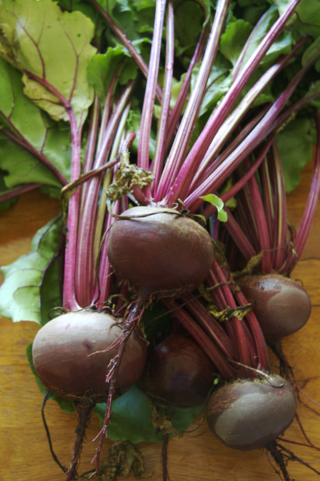
The beetroot or beet is the taproot portion of a Beta vulgaris subsp. vulgaris plant in the Conditiva Group. The plant is also known as the table beet, garden beet, red beet, dinner beet or golden beet. Beetroot can be eaten raw, roasted, or boiled. Beetroot can also be canned, either whole or cut up, and often are pickled, spiced, or served in a sweet-and-sour sauce.
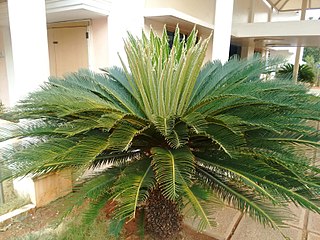
Cycas is a genus of cycad, and the only genus in the family Cycadaceae with all other genera of cycad being divided between the Stangeriaceae and Zamiaceae families. Cycas circinalis, a species endemic to India, was the first cycad species to be described in western literature, and is the type species of the genus.
Pyropia columbina, Southern laver, karengo in the Māori language and luche in the Spanish language, is a species of edible seaweed traditionally harvested by South Island Māori in New Zealand and Chilote people in Chile. It is closely related to Japanese Nori and Welsh laverbread.

Porphyra is a genus of coldwater seaweeds that grow in cold, shallow seawater. More specifically, it belongs to red algae phylum of laver species, comprising approximately 70 species. It grows in the intertidal zone, typically between the upper intertidal zone and the splash zone in cold waters of temperate oceans. In East Asia, it is used to produce the sea vegetable products nori and gim. There are considered to be 60–70 species of Porphyra worldwide and seven around Britain and Ireland, where it has been traditionally used to produce edible sea vegetables on the Irish Sea coast. The species Porphyra purpurea has one of the largest plastid genomes known, with 251 genes.
In mathematical logic, Lindström's theorem states that first-order logic is the strongest logic having both the (countable) compactness property and the (downward) Löwenheim–Skolem property.

Octocorallia is a class of Anthozoa comprising over 3,000 species of marine organisms formed of colonial polyps with 8-fold symmetry. It includes the blue coral, soft corals, sea pens, and gorgonians within three orders: Alcyonacea, Helioporacea, and Pennatulacea. These organisms have an internal skeleton secreted by mesoglea and polyps with eight tentacles and eight mesentaries. As with all Cnidarians these organisms have a complex life cycle including a motile phase when they are considered plankton and later characteristic sessile phase.
The Chinese Elm cultivar Ulmus parvifolia 'Select 380' was tested in the United States for cold-hardiness. The name is considered invalid by some for want of fuller description.

Wildemania is a genus of foliose red algae of the family Bangiaceae.

Takht-i Sangin is an archaeological site located near the confluence of the Vakhsh and Panj rivers, the source of the Amu Darya, in southern Tajikistan. During the Hellenistic period it was a city in the Greco-Bactrian kingdom with a large temple dedicated to the Oxus, which remained in use in the following Kushan period, until the third century AD. The site may have been the source of the Oxus Treasure.

Bangiales is an order of multicellular red algae of the class Bangiophyceae containing the families Bangiaceae, Granufilaceae, and possibly the extinct genus Rafatazmia with one species, Rafatazmia chitrakootensis. They are one of the oldest eukaryotic organisms, possibly dating back to 1.6 billion years old. Many species are used today as food in different cultures worldwide. Their sizes range from microscopic (Bangiomorpha) to up to two meters long. Many of its species are affected by Pythium porphyrae, a parasitic oomycete. Similar to many other species of red algae, they reproduce both asexually and sexually. They can be both filamentous or foliose, and are found worldwide.

Kallymeniaceae is a red algae family in the order Gigartinales.
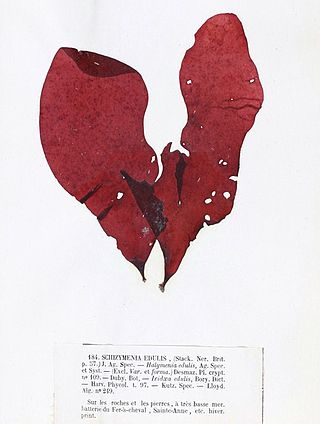
Dumontiaceae is a red alga family in the order Gigartinales.
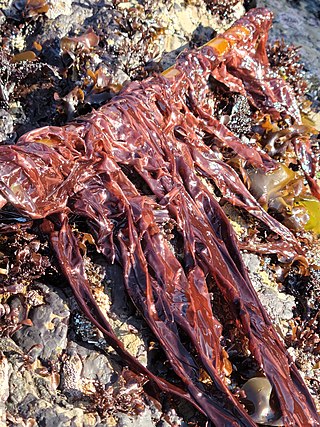
Pyropia is a genus of red algae in the family Bangiaceae. It is found around the world in intertidal zones and shallow water. The genus has folding frond-like blades which are either red, brown or green. Some Pyropia species are used to create nori, and are thus important subjects for aquaculture.

Bangiaceae is a family of red algae in the order Bangiales. It contains laver, used to make laverbread, and various species in the genus of Pyropia are used to make nori.

Christopher Paul Lindstrom is an American professional football guard for the Atlanta Falcons of the National Football League (NFL). He played college football for the Boston College Eagles.

Jesper Lindstrøm, is a Danish professional footballer who plays as a winger for Premier League club Everton, on loan from Serie A club Napoli, and the Denmark national team.
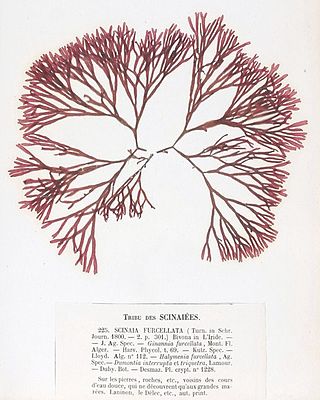
Scinaiaceae is a family of red algae (Rhodophyta) in the order Nemaliales.
Boreophyllum is a genus of foliose red algae of the family Bangiaceae.















